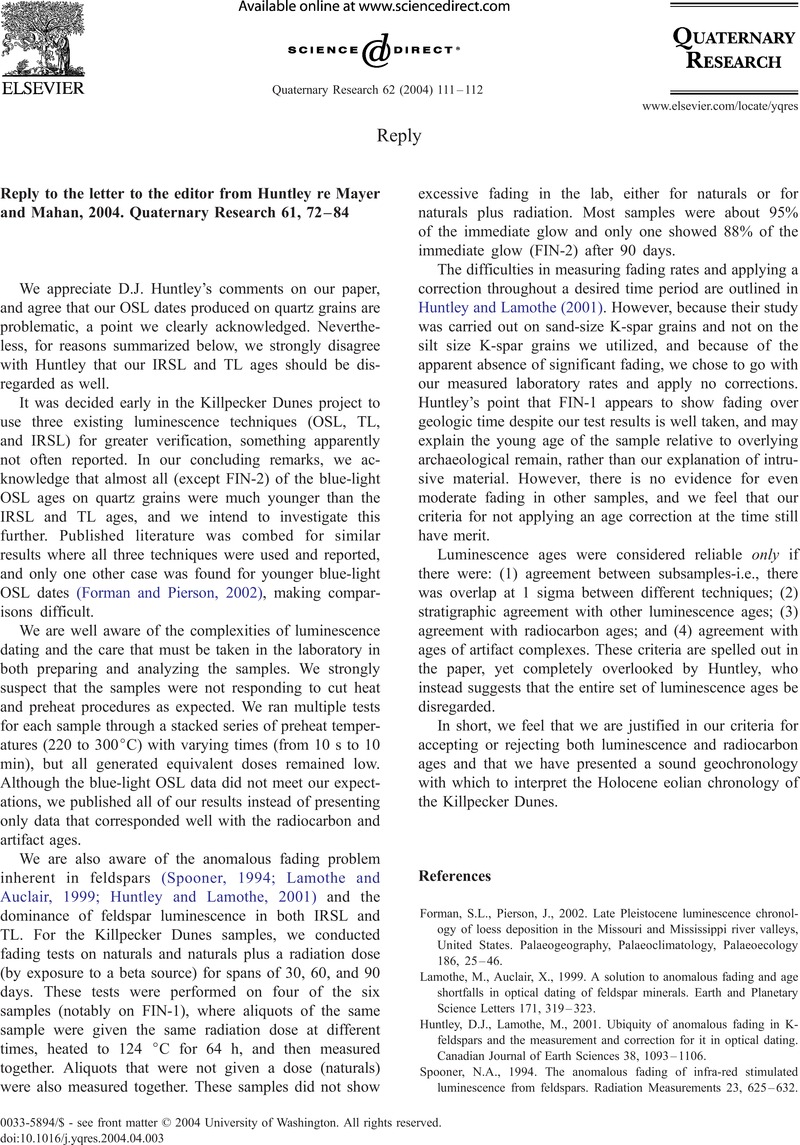No CrossRef data available.
Article contents
Reply to the letter to the editor from Huntley re Mayer and Mahan, 2004. Quaternary Research 61, 72–84
Published online by Cambridge University Press: 20 January 2017
Abstract
An abstract is not available for this content so a preview has been provided. Please use the Get access link above for information on how to access this content.

Information
- Type
- Reply
- Information
- Copyright
- University of Washington
References
Forman, S.L, Pierson, J, (2002). Late Pleistocene luminescence chronology of loess deposition in the Missouri and Mississippi river valleys, United States. Palaeogeography, Palaeoclimatology, Palaeoecology
186, 25–46.CrossRefGoogle Scholar
Lamothe, M, Auclair, X, (1999). A solution to anomalous fading and age shortfalls in optical dating of feldspar minerals. Earth and Planetary Science Letters
171, 319–323.CrossRefGoogle Scholar
Huntley, D.J, Lamothe, M, (2001). Ubiquity of anomalous fading in K-feldspars and the measurement and correction for it in optical dating. Canadian Journal of Earth Sciences
38, 1093–1106.CrossRefGoogle Scholar
Spooner, N.A, (1994). The anomalous fading of infra-red stimulated luminescence from feldspars. Radiation Measurements
23, 625–632.CrossRefGoogle Scholar

